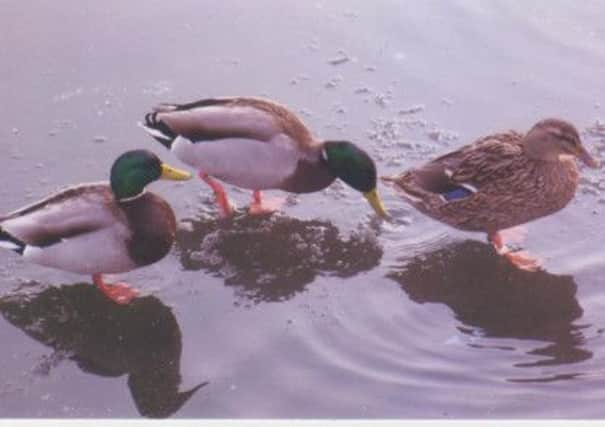Harsh wintersboosting theMallard arrivals


The previous decline was in contrast to the UK breeding increase (up 33 per cent) during the past thirty years. So what exactly is going on? WEBS’ boffins think that two hardish winters recently, brought immigrants in from the continent.
This always used to be the case in my youth, when if a saltings’ mallard was obtained it was often a very slightly smaller, darker mallard than your usual fat bird on the local pond.
Advertisement
Hide AdAdvertisement
Hide AdMilder winters followed for twenty or thirty years and Russian and Baltic birds no longer needed to seek refuge on our shores. Numbers were still high in the Netherlands, but that was as far as wild duck needed to go to escape Siberian winters. Two recent hard winters made them think again.
Another idea is that the freezing weather recently causes ducks to gather on very large salt water wetlands where they are more easily counted compared to small ponds missed by WEBS.
But what about our GB breeding successes? The boffins don’t say so but to me the answer must be to the credit of British Association for Shooting and Conservation (BASC) with farmers and owners of ponds creating habitat for target species and other wildlife.
Wherever I go in Sussex on my walks I see mallard in all those little wet woodland corners where they enjoy hiding and eating snails, worms, acorns and all aquatic fauna.
Advertisement
Hide AdAdvertisement
Hide AdThe largest WEBS count in 2010/11 was from Lower Derwent Ings where 4,350 mallard were seen in December, far more than in other recent years.
But this was dwarfed by the count of 8,142 made there in 1982 when the species was at its national peak.
Other large counts were on Loch Leven, Ellesmere Lakes, Moray Firth and, most surprisingly, the Cotswold Water Park.
Other ducks such as the shelduck also showed an increase, like that of the mallard, in the last three years, again due to birds driven west out of the Netherlands.
Advertisement
Hide AdAdvertisement
Hide AdTeal showed an enormous increase too in 2010/11 with the highest number ever recorded on any site in GB when 45,884 gathered on the Somerset Levels in February.
This tiny duck prefers vegetated ditches with high banks in which it can conserve heat but the cold conditions forced it out of those narrow, easily frozen waters, into the vast lakes which the RSPB have created there.
Hard winters may be a dreary time for us with heating problems and motorway emergencies but the wee silver lining is that the skies are full of our treasured picture postcard scenes depicted by the likes of Vernon Ward, Peter Scott and Julian Novorol; so here’s hoping for a white Christmas.